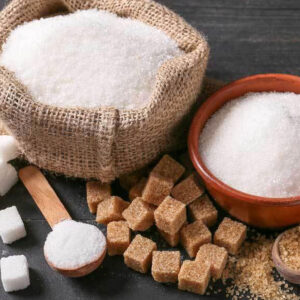The sourcing of beet sugar vs cane sugar affects farming impact in the sugar industry.
The sourcing of beet sugar vs cane sugar affects farming impact in the sugar industry.
Blog Article
Discover the Uses and Perks of Beet Sugar Vs Cane Sugar in Your Daily Diet
Discovering the distinct qualities of beet and cane sugar reveals even more than simply their sweetening capabilities; it highlights their one-of-a-kind effect on health and wellness and cooking arts. Beet sugar, understood for its subtle flavor, is commonly preferred in delicate desserts, whereas cane sugar, with its tip of molasses, includes splendor to robust meals. Each type holds its own nutritional profile and glycemic ramifications, welcoming a much deeper understanding of their duties in a well balanced diet and lasting usage practices.
Origin and Production Processes of Beet and Cane Sugar

The unique climates and soil kinds needed for growing sugar beetroots and sugarcane add to differences in their cultivation techniques and geographical circulation, affecting the business economics and sustainability of their manufacturing. beet sugar vs cane sugar.
Nutritional Contrast Between Beet Sugar and Cane Sugar
Regardless of stemming from different plants, beet sugar and cane sugar are nutritionally really comparable, both mainly consisting of sucrose. Each gives regarding 4 calories per gram, translating to about 16 calories per teaspoon. Structurally, both sugars are composed of approximately 99.95% sucrose, with marginal amounts of various other substances like moisture and trace element, which do not dramatically alter their dietary profiles.

Inevitably, when selecting in between beet sugar and cane sugar based on dietary content alone, both deal identical benefits and downsides as they are essentially types of the same particle-- sucrose, providing quick power without other nutrients.
Effect on Wellness: Glycemic Index and Caloric Material
Exploring even more into the results of beet sugar and cane sugar on wellness, it is essential to consider their glycemic index and caloric content. Both sugars are categorized as sucrose, which contains glucose and fructose. This structure leads them to have a similar influence on blood glucose degrees. The glycemic index (GI) of both beet and cane sugar is around 65, classifying them as high-GI foods, which can create fast spikes in blood sugar degrees. This is a crucial facet for people taking care of diabetes mellitus or those attempting to support their energy levels throughout the day.
Each type of sugar contains about 4 calories per gram, making their calorie web content equivalent. For those monitoring calorie consumption, particularly when handling weight or metabolic health and wellness problems, understanding this equivalence is essential (beet sugar vs cane sugar). However, excessive consumption of any type of high-calorie, high-GI food can add to health concerns such as excessive weight, cardiovascular disease, and insulin resistance.
Environmental and Economic Factors To Consider of Sugar Manufacturing
Beyond health influences, the manufacturing of beet and cane sugar additionally increases substantial environmental and economic i thought about this concerns. Sugar beet growing tends to call for cooler climates and has a reduced geographical footprint contrasted to sugar cane, which prospers in tropical regions. Nonetheless, both crops are extensive in my website terms of water use and land occupation, possibly causing logging and water deficiency. Financially, the worldwide sugar market is extremely volatile, affected by changes in international profession policies and subsidies. Many nations incentivize sugar production through monetary support, skewing market value and impacting small-scale farmers adversely.
Additionally, the use of chemicals and plant foods in both beet and cane sugar growing can result in soil degradation and pollution, additional influencing biodiversity and neighborhood water bodies (beet sugar vs cane sugar). The option between cultivating sugar beet or cane typically depends upon local ecological problems and financial elements, making the sustainability of sugar manufacturing a complex concern
Culinary Applications and Flavor Differences
While the ecological and economic facets of sugar manufacturing are without a doubt significant, the choice between beet and cane sugar additionally affects cooking applications and taste profiles. Beet sugar, stemmed from the sugar beet plant, is known for its remarkably neutral taste. This makes it a flexible component in baking, where it does not modify the taste of other parts. It liquifies quickly and is excellent for use in cakes, cookies, and breads.
Cane sugar, drawn out from sugarcane, often keeps molasses traces, which pass on a distinctive splendor and Get More Info deepness. This mild molasses taste improves the complexity of baked items, sauces, and marinades. It is especially preferred in things where a sugar undertone is desired, such as in brownies or gingerbread. Additionally, the small variation in wetness content in between beet and cane sugar can influence the appearance and consistency of recipes, making cane sugar a recommended selection for details dishes that benefit from its special buildings.

Conclusion
To conclude, both beet and cane sugar have unique beginnings and manufacturing procedures, supplying comparable nutritional accounts with mild distinctions in salt web content and taste. While their influence on health, specifically pertaining to glycemic index and calories, is equivalent, the option in between them often comes down to ecological, financial aspects, and particular cooking requirements. Understanding these facets can guide consumers in making educated choices that align with their health goals and flavor choices.
Report this page